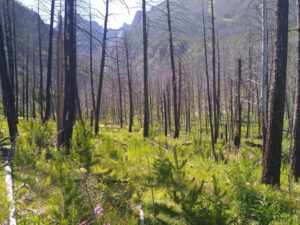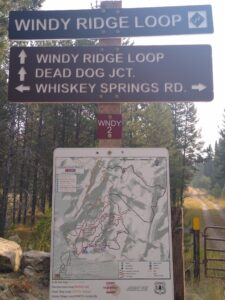
The Custer Gallatin National Forest proposes to log and otherwise treat more than 16,000 acres across 40,000 acres as part of its South Plateau project near West Yellowstone, Montana.
Ostensibly, the Forest Service claims the logging will improve forest health and reduce fire risk. Nothing could be further from the truth. It is another example of the Forest Service’s con job of justifying logging to the detriment of other forest values.
I understand the agency is under tremendous political pressure to do something, but deceiving the public to legitimize logging is not acceptable.
In the case of the South Plateau project, the justifications for logging are even more suspect. The Forest Service notes that lodgepole pine forests near West Yellowstone “might” be susceptible to bark beetles, and of course, at some point, they might burn.
Of course, this might not occur for hundreds of years, but no matter. Rather than allow natural processes to select which trees are more resistant to beetles and/or fires, they will preemptively kill the trees with chainsaws.
The chainsaw medicine the Forest Service proposes will reduce the forest’s health and may enhance fire spread.
The Forest Service obsession with precluding natural mortality fails to acknowledge that the second greatest biodiversity in our forests is located in the snag forests killed by high severity fires and bark beetles. Some researchers consider bark beetles to be “keystone” species in that they create habitat used by many other species. Same for high severity fires. In other words, if you are truly concerned about healthy forest ecosystems, you would embrace not attempt to preempt such processes.

There are numerous species that live in mortal fear of green forests since they depend on the snag forests for their survival. Photo George Wuerthner.
For example, much research suggests that more species depend on dead trees than live trees. In the aftermath of a high severity fire, there are more native bees, more bats, more birds, more small rodents, more fish if the trees fall into streams, more flowers, and so forth.
In the age of climate change, dead and living trees store carbon. Even burnt trees store far more carbon than logged forests. Logging and processing release the majority of the carbon stored in forests, which is why recent research concludes that timber harvest is responsible for more Greenhouse Gas emissions in Oregon than all the cars, trucks, and planes.
Large fires are driven by weather/climate, not fuels. Drought, low humidity, high temperatures, and most importantly, high winds sustain the very fires the Forest Service suggests it is trying to prevent. The irony is that active management meaning chainsaw medicine does not prevent large fires nor does it preclude the spread of such blazes.
Large fires are almost entirely driven by climate/weather conditions. For instance, the 1988 Yellowstone fires were not controlled by the presence of more than 10,000 firefighters, but snowfall on September 11th finally halted the fires.
Furthermore, there is the issue that the probability that a fire will encounter any “treated” area is minuscule. But we get the negative effects of logging today.
Numerous new studies find that logging by increasing the amount of fine fuels sustains fires, and while forest openings can increase wind and thus fire spread.
For instance, one recent study of 1500 wildfires across the West found that high severity fires were most significant in areas with “active management,” meaning chainsaw medicine, while parks, wilderness areas, and other protected areas had less severe blazes. Another report by the non-partisan Congressional Research Service concluded that logging failed to reduce large fires. A study of the recent large blazes in Oregon this past summer found that commercial timberlands are obviously under “active management” burned at higher severity than untreated forests. These are only a few of the studies that the Forest Service could have reviewed with a simple google search.

Even temporary roads are often used by recreationalists, spread weeds, and are a source of human intrusions impacting sensitive animals like grizzly bear and elk. Photo George Wuerthner.
Worse, the South Plateau proposal calls for 57 miles of “temporary” roads, a euphemism the agency uses all the time to suggest that a temporary road somehow has fewer ecological impacts than a permanent road.
Nevertheless, when such roads are open, they have the same effect as a permanent road. This includes displacement of sensitive species like grizzlies and elk, the spread of weeds, sedimentation into streams, while the sidecut of hillsides affects subsurface water flows.
Plus, numerous studies show that the closure of so-called “temporarily” roads is ineffective at precluding use by mountain bikes, ATVs, snowmobiles, and other recreational vehicles. Once built, they are seldom fully restored.
Incidentally, most wildfires are started along roads, so increasing the roads’ milage only enhances the chance of a new fire.
The way to protect homes is to promote fire-safe policies around homes and limit subdivisions in the wildlands interface, not by degrading our forest ecosystems with logging.
Once again, the Forest Service demonstrates it is nothing more than a handmaiden to the timber industry and not a real steward of our national forest heritage.
The Forest Service is accepting comments for 45 days. You can send any concerns you have about this proposal to appeals-northern-regional-office@usda.gov